

Fasten your seatbelt: increasing job mobility puts employees in the driver’s seat. Fasten your seatbelt: increasing job mobility puts employees in the driver’s seat Engaging and communicating effectively with your workforce are critical During the most recent economic downturn, it was clear that employers were in the driver’s seat.
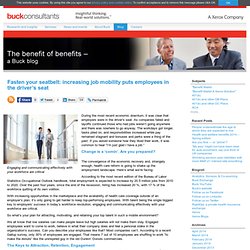
As companies failed and layoffs continued those who had jobs weren’t going anywhere and there was nowhere to go anyway. The workdays got longer, tasks piled on, and responsibilities increased while pay remained stagnant and bonuses and perks were a thing of the past. If you asked someone how they liked their work, it was common to hear “I’m just glad I have a job.” Change is a ‘comin’. The convergence of the economic recovery and, strangely enough, health care reform is going to shake up the employment landscape. According to the most recent edition of the Bureau of Labor Statistics Occupational Outlook handbook, total employment is expected to increase by 20.5 million jobs from 2010 to 2020. Employee Engagement report: The evidence stacks up. Tom Newcombe , 12 Nov 2012 It’s confirmed: employee engagement drives performance but to deliver £26 million growth by better engaging staff, large companies need to share their expertise with small firms, Serco HR director Geoff Lloyd said today as the Engage for Success Task Force launched its evidence report.
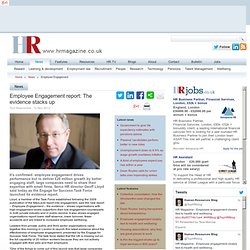
Lloyd, a member of the Task Force established following the 2009 publication of the MacLeod report into engagement, said the new report – Employee Engagement – the evidence – shows organisations with high engagement levels outperform their low engagement counterparts in both private industry and in public service. Lies, Damn Lies, and Statistics: Engagement & Company Performance. Earlier this year, John Hollon wrote an article here on TLNT titled Getting to the Bottom Line Impact of Employee Engagement.
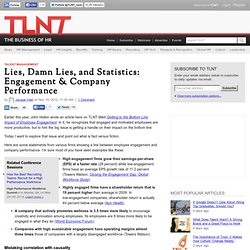
In it, he recognizes that engaged and motivated employees are more productive, but to him the big issue is getting a handle on their impact on the bottom line. Today I want to explore that issue and point out what is fact versus fiction. Here are some statements from various firms showing a link between employee engagement and company performance. I’m sure most of you have seen examples like these: High-engagement firms grow their earnings-per-share (EPS) at a faster rate (28 percent) while low-engagement firms have an average EPS growth rate of 11.2 percent (Towers Watson, Closing the Engagement Gap: Global Workforce Study).Highly engaged firms have a shareholder return that is 19 percent higher than average in 2009. Why You Can't Afford Employees That Are Not Engaged. Too often, corporate managers adopt an outdated approach to employee communications.
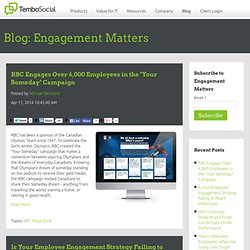
The Business Case for Employee Engagement: How a Highly Engaged Workforce Leads to Real Revenue Results. What is the ROI of Employee Engagement. Do you know the impact engaged employees can have on your bottom line?
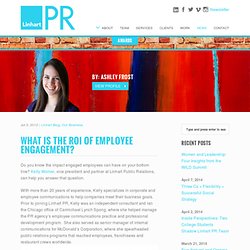
Strong engagement scores can spell trouble for organisations. High levels of engagement could actually be damaging for organisations and their employees if one dimensional engagement surveys mask the types of engagement at play within an organisation. The Importance of Employee Engagement. The Dollars and Sense of Employee Engagement. Engage Your Employees, Educate Your Frontline, Increase Your Profits. By Hunter Lovins Claudia Capitini, the aptly named Sustainability Maven at Eco-Products, had a problem.
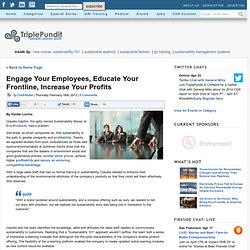
She knew, as smart companies do, that sustainability is the path to greater prosperity and profitability. Twenty six separate studies from such consultancies as those wild eyed-environmentalists at Goldman Sachs show that the companies that are the leaders in environment social and good governance policies, bolster stock prices, achieve higher profitability,and secure an enduring competitive advantage. With a large sales staff that had no formal training in sustainability, Claudia needed to enhance their understanding of the environmental attributes of the company’s products so that they could sell them effectively.
The vital connection between staff and the bottom line. Find out how easyJet inspired customers and staff alike in a case study, here Read a case study on how My Wellbeing app has helped raise staff morale, here Find out if social media can change a culture from competitive to collaborative, here Staff engagement is essential to growth, especially in times of economic uncertainty.
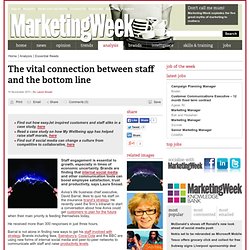
Brands are finding that internal social media and other communication tools can boost employee satisfaction, trust and productivity, says Laura Snoad. Aviva’s life business chief executive, David Barral, likes to quiz his staff on the insurance brand’s strategy. He recently used the firm’s intranet to start a conversation about how Aviva could get customers to plan for the future when their main priority is feeding themselves today.
He received more than 300 responses in just three hours. Barral is not alone in finding new ways to get his staff involved with strategy. The need for socially-minded internal marketing systems is obvious. Internal social networks. Return on Energy, New Workplace Methodology to Improve ROI, Introduced. Irving, TX (PRWEB) January 18, 2012 Return on Energy™, a powerful new methodology to enhance employee engagement and increase employee productivity, was introduced today.
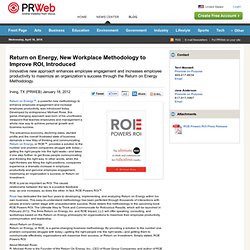
Developed by entrepreneur Michael Rose, this game-changing approach was born of his unorthodox viewpoint that teaches employees and management a whole new way to achieve personal growth and business success. The precarious economy, declining sales, stunted profits and the overall frustrated state of business demands a new Way of thinking and communicating.
Return on Energy, or ROE™, provides a solution to the number one problem companies struggle with today—getting the right people into the right seats—and takes it one step further: to get those people communicating and thinking the right way. ROE is just as important as ROI. The High Cost of a Disengaged Employees. Many companies think of ‘employee engagement’ as the icing on the cake, something nice to have but not necessary.
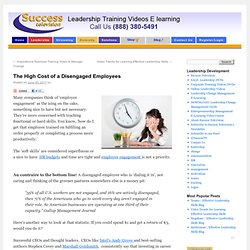
They’re more concerned with teaching functional or hard skills. You know, ‘how do I get that employee trained on fulfilling an order properly or completing a process more productively.’ The ‘soft skills’ are considered superfluous or a nice to have. When Employees aren’t Happy, then the Company Isn’t Happy. Remember that saying: “When Mom isn’t happy, then no one is happy.”
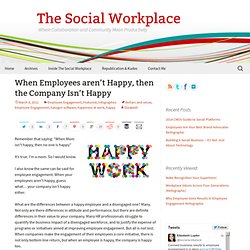
It’s true. I’m a mom. So I would know. I also know the same can be said for employee engagement.